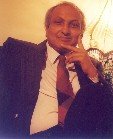Deming believed grasp of his System of Profound Knowledge (1993) would induce managements to progress his principles for raising the quality of decisions, i.e., assuring Learning, Innovation and Optimization. The System did not flourish though those who invested the effort did like Marshall Industries. Perhaps the complex effort demanded was too much for most managers. This blog suggests redefining the System to encourage Feedback. Conduct of Feedback is simple and its power to create the force of Knowledge for producing Learning, Innovation and Optimization is well founded:
1.Appreciation for a system: understanding the overall processes involving suppliers, producers, and customers (or recipients) of goods and services;
2.Knowledge of variation: the range and causes of variation in quality, and use of statistical sampling in measurements;
3.Theory of knowledge: the concepts explaining knowledge and the limits of what can be known;
4.Knowledge of psychology: concepts of human nature.
Revised System of Profound Knowledge:
● Appreciation for a system to foster growth: The Knowledge Spiral defines the inter-dependent components for Knowledge creation: A vision for the collective, Socialization, existence of support groups, and free cross-border interactions in context across the organization.
● Knowledge of the universal force that enhances folly: The Knowing-Doing Gap is universal. It lowers the Collective Ability to define the root problem and apply Knowledge effectively.
● Theory of the power of constructive Feedback: The Systems Theory of Senge concludes that cross enterprise Feedback builds a Knowledge force for innovation and good execution. The force is enhanced by systematic Feedback to practice the Fifth Discipline of Systems Thinking.
● Knowledge of power of the Freedom to interact: The Freedom fosters Feedback. Managed without threat it fulfills the primal desire to learn as also live in Freedom with the recognition, respect and dignity earned. The intrinsic motivation makes Feedback a self-reinforcing practice. The success that follows instills faith in the practice for success and growth of the collective.
















